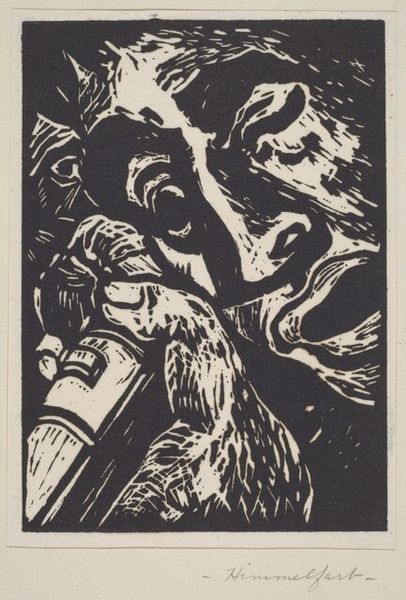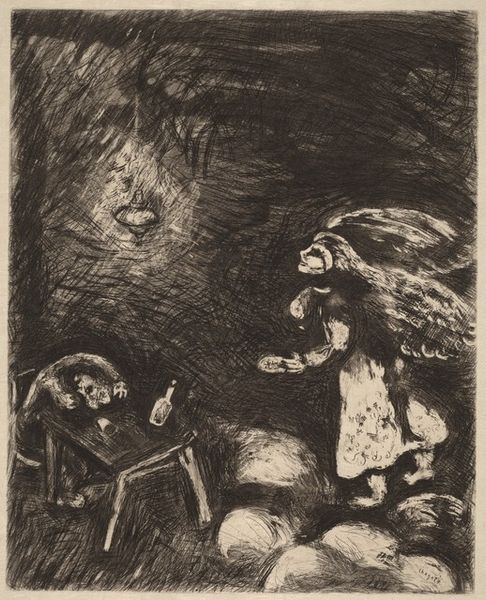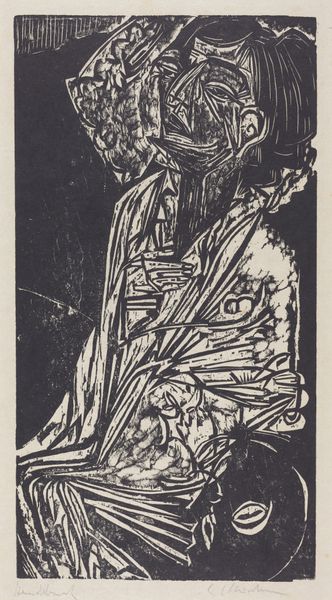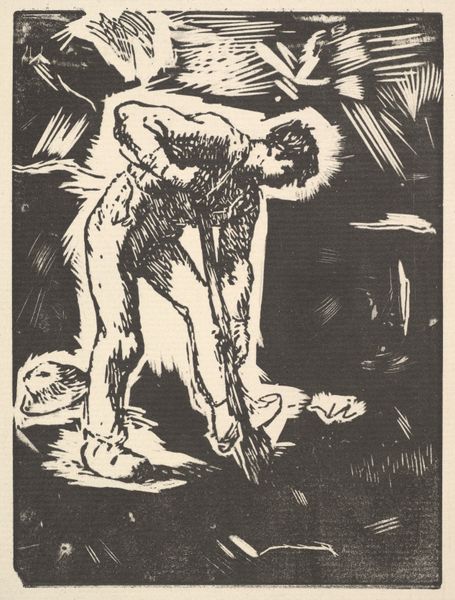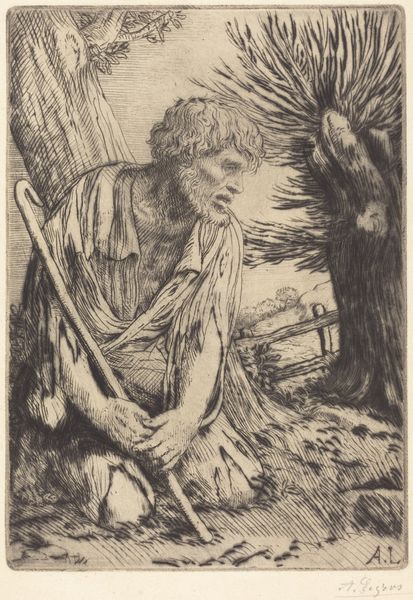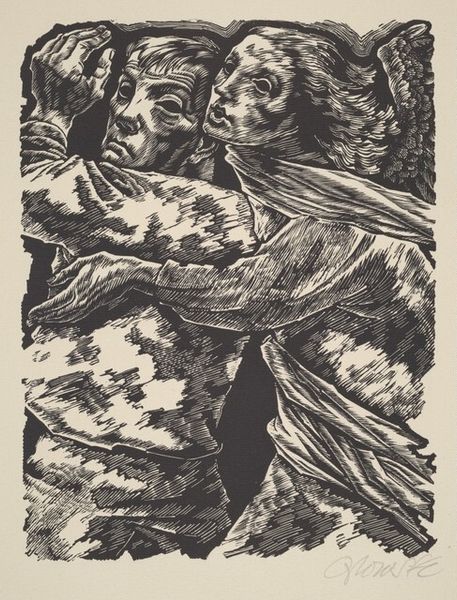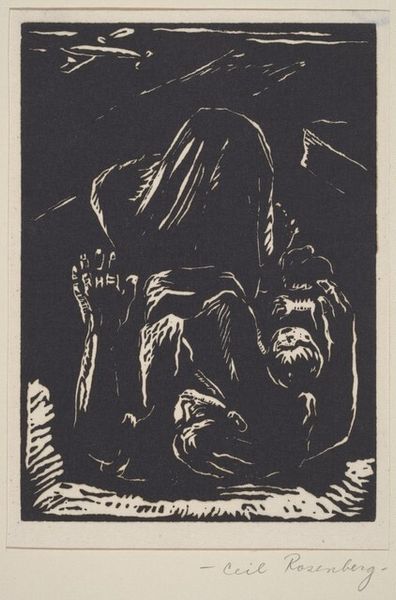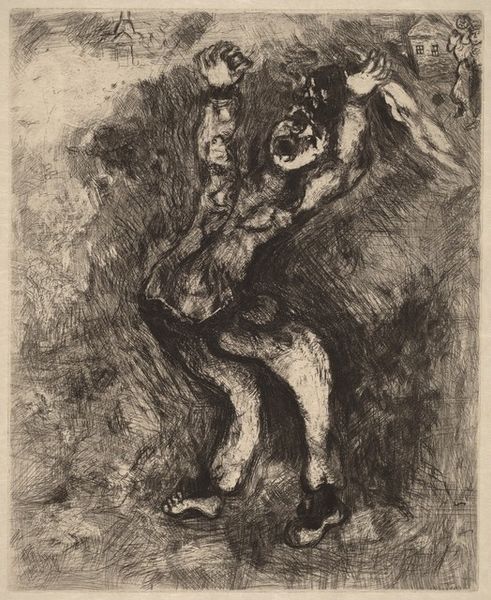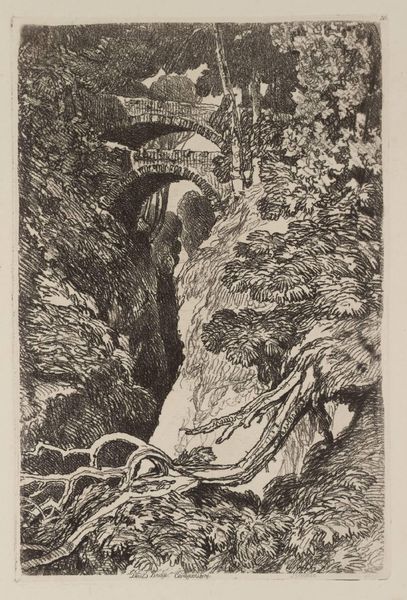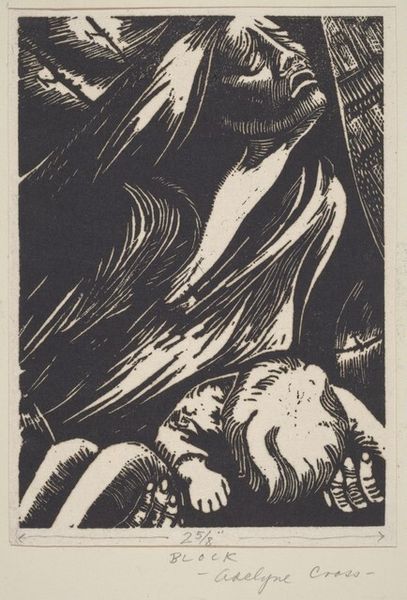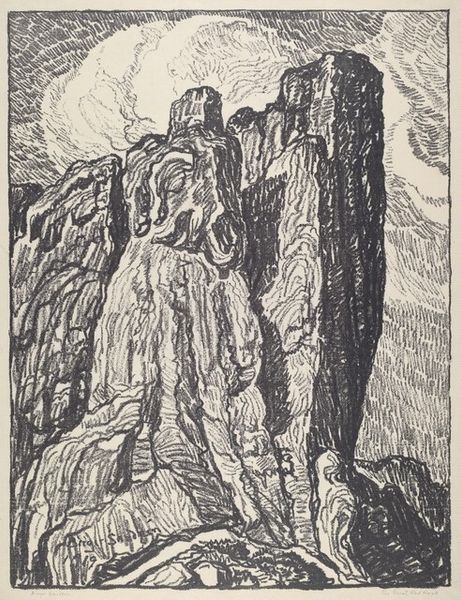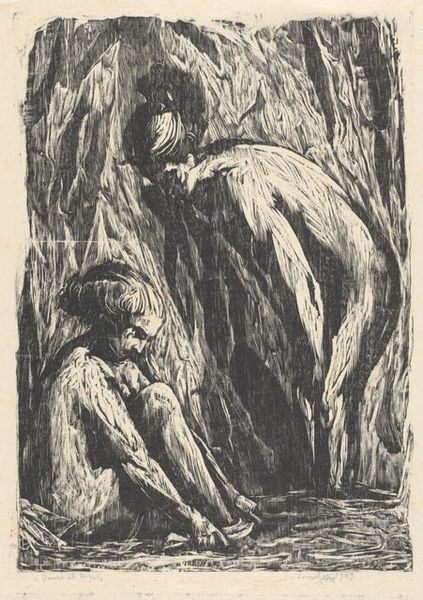
Dante: L'enfer, Chant XXI, Ongles sales (Dante's Inferno, Canto XXI, Nasty Claws) 1963
0:00
0:00
graphic-art, print, woodcut
#
graphic-art
#
medieval
#
narrative-art
#
pen drawing
# print
#
landscape
#
figuration
#
woodcut
Dimensions: image: 50.1 × 40 cm (19 3/4 × 15 3/4 in.) sheet: 59 × 48.7 cm (23 1/4 × 19 3/16 in.)
Copyright: National Gallery of Art: CC0 1.0
Curator: Bela Gy Szabo's woodcut, "Dante: L'enfer, Chant XXI, Ongles sales," from 1963, really pulls you into a dark and tumultuous scene. What's your first reaction to it? Editor: Chaotic. The heavy contrast and dense composition create a feeling of intense anxiety. It's like a nightmare pressing in from all sides. Curator: It's interesting to consider this work within the context of Szabo's other prints and drawings. He was dedicated to printmaking—and woodcut requires immense labor and specific skills, wouldn't you agree? Editor: Absolutely. Thinking about the physicality of the woodcut – the act of carving away at the block to create this infernal vision – does bring an important dimension to it. There's a directness there, a hands-on quality connecting Szabo to the medieval artisans who originally illuminated Dante's texts. But this scene—Dante's hell—is definitely populated with class anxieties. Curator: How so? Editor: Consider the tools, the implements that demons are holding - rakes or pitchforks of sorts - almost as the weaponization of labor against the sinners cast into pits, and Dante’s positioning above. How does this scene reflect anxieties present in the Cold War period? Curator: Well, beyond Szabo's clear reverence for Dante, woodcuts were increasingly embraced at the time because of its reproducible and disseminatable qualities. He, along with a long line of artists, chose a medium perfectly suited to spreading ideas...or fears. Editor: Perhaps Szabo, creating this in the shadow of Cold War anxieties, felt as though the potential for ideological division and conflict was turning the world into its own kind of hell. It seems his vision aligns with our anxieties today, where power, corruption, and systemic failures perpetually keep people in pits—ones of their own kind. Curator: Perhaps. Regardless of his intentions, the work remains a compelling visual experience and a lasting document of Szabo's meticulous craftsmanship. Editor: Indeed, a fierce reminder that some societal nightmares unfortunately transcend time.
Comments
No comments
Be the first to comment and join the conversation on the ultimate creative platform.
